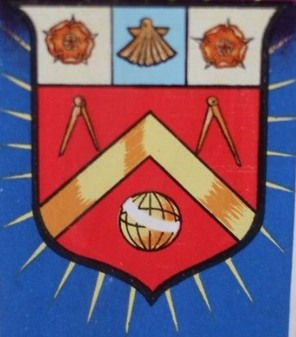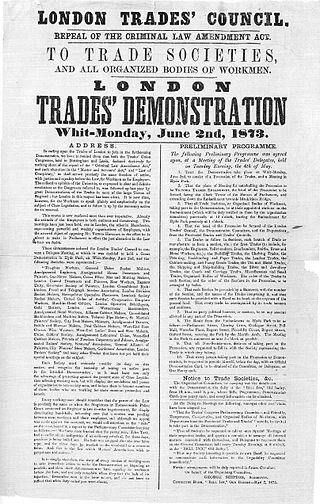Related Research Articles

The United Brotherhood of Carpenters and Joiners of America, often simply the United Brotherhood of Carpenters (UBC), was formed in 1881 by Peter J. McGuire and Gustav Luebkert. It has become one of the largest trade unions in the United States, and through chapters, and locals, there is international cooperation that poises the brotherhood for a global role. For example, the North American Chapter has over 520,000 members throughout the continent.

Peter J. McGuire was an American labor leader of the nineteenth century. He co-founded the United Brotherhood of Carpenters and Joiners of America in 1881 along with Gustav Luebkert and became one of the leading figures in the first three decades of the American Federation of Labor. He is credited with first proposing the idea of Labor Day as a national holiday in 1882.

Robert Applegarth was a prominent British trade unionist and proponent of working class causes.
International Woodworkers of America (IWA) was an industrial union of lumbermen, sawmill workers, timber transportation workers and others formed in 1937.
New Model Trade Unions (NMTU) were a variety of Trade Unions prominent in the 1850s and 1860s in the UK. The term was coined by Sidney and Beatrice Webb in their History of Trade Unionism (1894), although later historians have questioned how far New Model Trade Unions represented a 'new wave' of unionism, as portrayed by Webbs.

The Amalgamated Society of Woodworkers (ASW) was a British trade union representing carpenters, joiners and allied trades. The ASW was formed in 1921 by the amalgamation of two smaller unions. It was itself merged into the Union of Construction, Allied Trades and Technicians in 1971.

Alexander Gordon Cameron was a British trade unionist and Labour Party politician.

The Trade Union Act 1871 was an Act of the Parliament of the United Kingdom which legalised trade unions for the first time in the United Kingdom. This was one of the founding pieces of legislation in UK labour law, though it has today been superseded by the Trade Union and Labour Relations (Consolidation) Act 1992.

The London Trades Council was an early labour organisation, uniting London's trade unionists. Its modern successor organisation is the Greater London Association of Trades (Union) Councils
Frank Wolstencroft was a British trade union leader.
The General Union of Carpenters and Joiners (GUC&J) was a trade union in the United Kingdom.

John Damrel Prior was a British trade unionist and chairman of the Parliamentary Committee of the Trades Union Congress from 1876 until 1879.

Francis Chandler was a British trade unionist.
The Associated Carpenters and Joiners of Scotland was a trade union representing woodworkers in Scotland.
The Building Workers' Industrial Union of Australia was an Australian trade union covering workers in the construction industry.
Alfred Gould was a British trade unionist and politician.
Thomas Barron was a Scottish trade unionist and political activist.
The Notts Trades Council, formally known as the Nottinghamshire Nottingham and Mansfield Trades Council, brings together trade unionists in Nottinghamshire, in England.

Henry Taylor was a British trade union leader.
The Amalgamated Society of Woodworkers of South Africa (ASW) was a trade union representing carpenters, joiners and those in related trades in South Africa.
References
- 175 Years of Building Trade Unionism, UCATT, 2002
- Briggs, Asa. “Robert Applegarth and the Trade Unions”, in Asa Briggs, Victorian People (1955) pp. 168–196. online